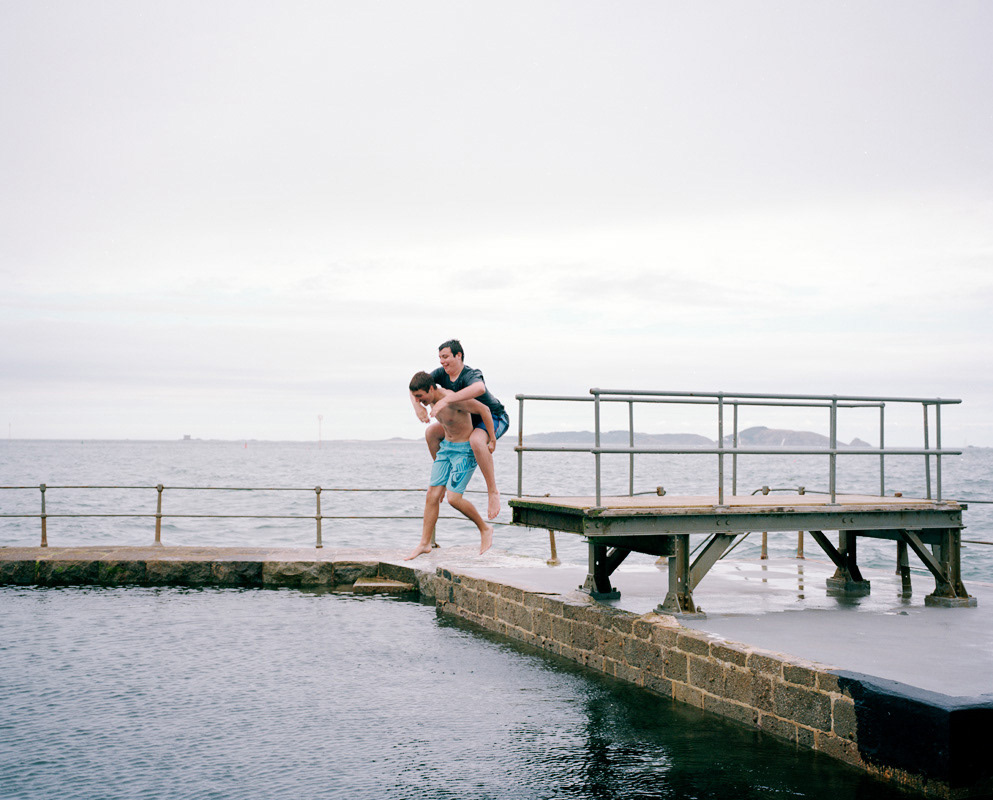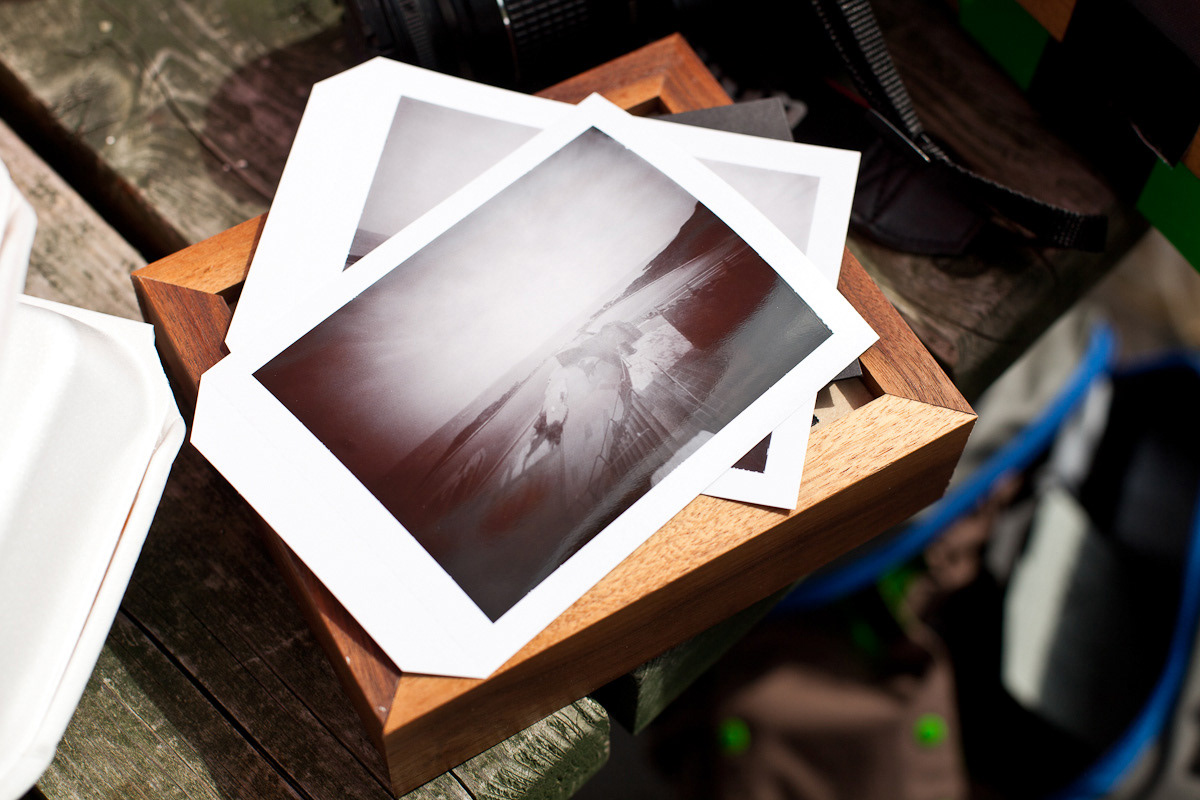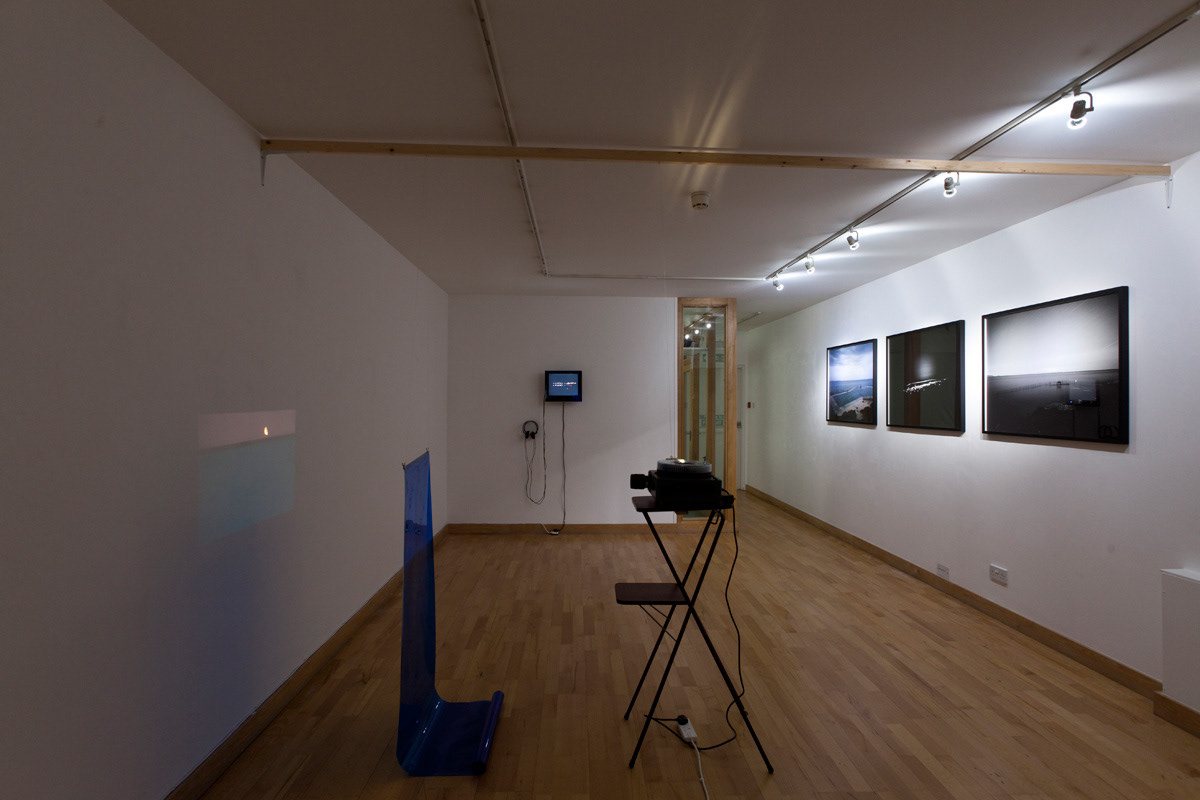


















































Firedive is the name of a film by Tim Bowditch about La Vallette bathing pools on the island of Guernsey. Firedive is also the name for the three-year project centred around the bathing pools which began in 2009, and culminated in 2012 with an exhibition of the Firedive film along with three new artworks commissioned in response to the film and La Vallette pools.
Tim went to Guernsey to film the pools for Firedive in 2010. He screened the film along with an exhibition of videos at Guernsey Swimming Club's 125th anniversary gala in 2011, and he commissioned three UK artists to create new work for an exhibition about La Vallette bathing pools called Forwards, backwards and forwards again, at the greenhouse in St Peter's Port in 2012.
In 2009, Tim visited La Vallette with a medium format camera, trying to capture the architecture of the bathing pools whilst they were in use in the summer months. These pictures were the beginning of the entire Firedive project.
From the pictures Tim had taken, he began to formulate an idea for a film which would be a portrait of La Vallette bathing pools as it is now, with a spoken narrative evoking La Vallette as it used to be. Up until the 1970s, night time swimming galas took place at the bathing pools over the summer months. These galas culminated in a torch-lit procession by the members of the swimming club. After the torches were extinguished a circle of petrol was set alight in the pool and a diver would leap from the five metre board, down through the flames and into the water. This was the firedive which inspires the title of Tim's film.
Originally Firedive was to be a single take, 16mm film with the camera lifting slowly past the one remaining diving board. As the idea for the film became more complex, the 16mm was replaced with HD digital video for practical purposes. Through discussions and conversations, not least between Tim and his mother – who lives in Guernsey, and whose own mother had worked at the bathing pools in its heyday - Tim decided to stage his own torch-lit procession at the pools. The film of this night time procession makes up the visual element of Firedive, along with footage of La Vallette in the day time and as the sun sets.
Whilst in Guernsey, Tim conducted interviews with local people who had taken part in the original night time galas. These included swimmers who had done the firedive when the boards were still in place, as well as members of the 'crazy gang' – who entertained the gala audience with their antics in between the swimming events. These interviews were edited to tell the story of La Vallette bathing pools. The narration is overlaid on to field recordings and soundscapes made at the bathing pools and around the island, and becomes the soundtrack to Firedive.
Whilst working on the film in Guernsey, Tim shot many hours of footage which couldn't be used in the final edit of Firedive. Instead, this footage was made into four supplementary videos: Tom Walsh 1963 Guernsey Swimming Club Handbook, a film of the empty bathing pools at night, with Tom Walsh reading out a list of gala events from the 1963 GSC Handbook; Morning Swimmers, documenting a group of outdoor swimmers who arrive at the bathing pools for a sunrise swim, every day of the year; Heyward Quevatre, an hour long interview with Heyward, a native Guernseyman diver who trained down at the pools and swam almost every day of his life; and Heyward Quevatre Photo Archive, a film of Heyward showing Tim his photo archive of La Vallette pools and explaining the story behind each image.
In August 2011, Tim Bowditch returned to Guernsey with the completed film and it was screened as part of the 125th anniversary celebrations of the Guernsey Swimming Club.
In August 2011, Tim Bowditch returned to Guernsey with the completed film and it was screened as part of the 125th anniversary celebrations of the Guernsey Swimming Club.
A screen was erected at the pools, and after the GSC's swimming gala (the first since 1986), Firedive was shown to an audience of swimming club members, La Vallette regulars and intrigued visitors. After the film, the swimming club staged their own torch-lit procession with 125 torches – one for each year of the club’s existence. As well as the poolside screening of Firedive, the supplementary video works were exhibited on televisions in the changing room of the bathing pools.
Along with Tim, three artists came to the island for the gala: Sybella Perry, Theo Niderost and David Angus. Each had a brief to make new art work in response to the film screening, the gala, and the bathing pools. The artists spent a week on the island, looking, thinking and making, before heading back to the mainland to finish their work.
In April 2012, Forwards, backwards and forwards again opened at the greenhouse in St Peter Port, Guernsey. Firedive was exhibited, alongside the work of the three artists who came to Guernsey in 2011.
Sybella Perry, Theo Niderost and David Angus were invited to Guernsey to witness the screening of Firedive at the pools. This experience, along with the rest of their time spent in Guernsey, informed the work that made up Forwards, backwards and forwards again.
Out Of Vision by Sybella Perry is a film about the screening of Firedive and a re-enactment of the themes that permeate Tim’s film. Sybella documented the whole of the swimming gala; from the setting up of the projection screen, right through to the torch-lit procession that finished the event.
An interview with Tim plays out over the edited footage, explaining the reasoning behind Firedive. “Out-of-vision” is a term taken from television broadcasting, when a news reader or continuity announcer speaks over pre-recorded footage, rather than directly to camera. Here, Tim becomes the announcer and Firedive itself is “out-of-vision”. We never see the screening, only the activity surrounding it.
Out Of Vision inhabits the same filmic space as Firedive – certain scenes from Firedive are almost re-shot, with slight differences in camera angle and lighting. But, just as Firedive never depicts the real firedives that took place at the swimming galas, Out Of Vision only shows the action that happens around the screening of Firedive, and never the film itself.
Theo Niderost’s La Vallette: Three Exposures is another document of the screening, but unlike Out Of Vision, it is at one remove from the content of the film. Where Firedive and Out Of Vision are made up of close shots documenting the human activity at La Vallette, Theo’s photographs capture the architecture of the pools as a whole.
Theo Niderost’s La Vallette: Three Exposures is another document of the screening, but unlike Out Of Vision, it is at one remove from the content of the film. Where Firedive and Out Of Vision are made up of close shots documenting the human activity at La Vallette, Theo’s photographs capture the architecture of the pools as a whole.
There is a literal distancing of Theo’s camera from the pools which is quite different from the intimacy of Firedive and Out Of Vision. There is also a more symbolic distancing. The three photographs are all long exposures, which places them outside of a cinematic time. The photographs are a spatial representation of the pools, rather than a temporal representation. And yet, the long exposure process is just another way of making a portrait of the pools.
In Theo’s Procession, the shape of the pools is clearly defined by the flaming torches being carried around the edge of the water – blurring time, but clearly defining space. Interestingly, for this image, Theo constructed his own pinhole camera. The pools were designed in response to the tides, and his camera was, in turn, designed in response to the pools.
Theo’s widening of the literal and metaphorical frame of his images allows us to think differently about La Vallette. The pools are an example of human engineering, which not only have social use embedded within their design, but also an understanding of processes outside human control, like the motion of the rising and falling of the tides.
If we think of Sybella’s Out Of Vision as inhabiting the same space as Firedive, and Theo’s photographs as being at one remove, then David Angus’s Mechanical Tides is another step back from the human activity that goes on at the pools. With Mechanical Tides David invites us to consider the underlying tidal process that shapes the pools’ design.
Whilst in Guernsey, David documented the movement of the moon across the night sky from the vantage point of the pools. In the gallery space, with a 35mm slide-projector rigged up to a pulley system, he created a kinetic sculpture that pulls a piece of blue acetate up and down the wall as the moon moves across the frame of his slides, mimicking the gravitational pull that creates the lunar tides.
David worked on the production of Firedive with Tim back in 2010. At the time, he was struck by how the tides defined their ability to film, so that on a given day they might only have a few hours down at the pools, between low and high tide.
The photographs for Mechanical Tides were taken at La Vallette, acting out the specific effect that the tide had on the production of Firedive. But for the viewer of Mechanical Tides, the photographs could have been taken anywhere. In normal life, we do not work out the tides through a rational understanding of the gravitational pull of the moon, but through human constructs like tide tables.
The pools are a visible tide table, their design displays a concrete understanding of the movements of the sea. David’s work pulls back from the human use of La Vallette, and places the environment within a wider scientific context.
Each of the artists’ works relates to the pools, but in progressively more abstract ways: the social history of Firedive, the vibrant human activity in Out Of Vision, the spatial portraiture of Three Exposures, and the abstract representation of Mechanical Tides.
Forwards, backwards and forwards again was the culmination of the three-year Firedive project; a temporary memorial to La Vallette bathing pools and its changing role in the coastal culture of Guernsey.


